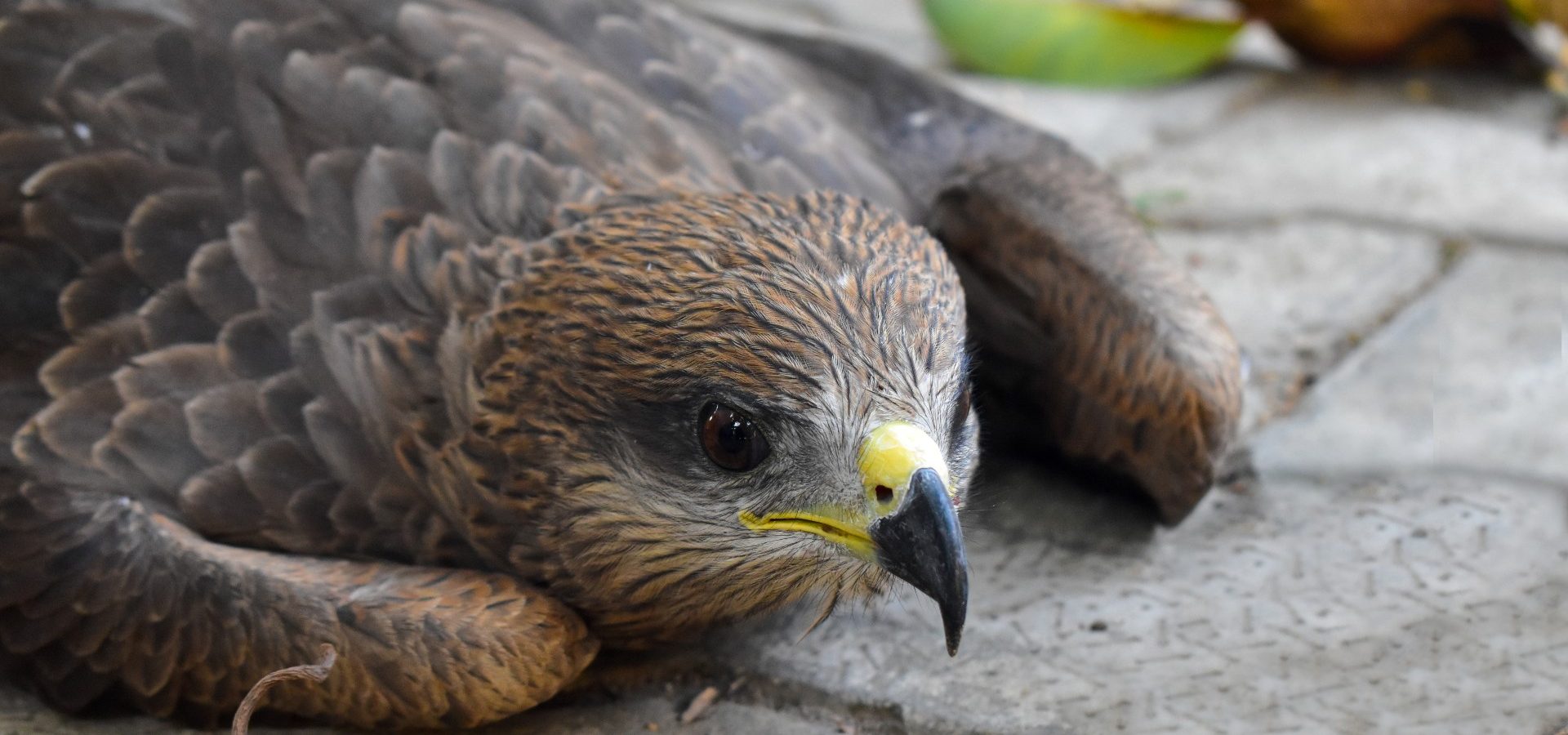At some point in our lives, we must have heard of the term ‘birds of prey’. In fact, there is even a comic book superhero team of the same name! In truth, birds of prey abound in diverse ecosystems. These flying hunters are always on the lookout for a kill, one that’s going to be the next meal for their family. Birds of prey are classified into two major groups (also termed as ‘order’ in biology): Falconiformes and Strigiformes.
There is another term that’s used commonly to denote these birds: Raptors. Diurnal birds of prey such as eagles, falcons, hawks and vultures belong to the order Falconiformes, and they are often referred to as raptors. More than 500 species of raptors are known to exist globally. On the other hand, the order Strigiformes consists of nocturnal birds of prey such as owls. But how much do we actually know about these real-life superbirds? Guess it’s time to find out!
The Family of Talons
Out of all birds of prey, raptors are some of the largest flying wonders on planet Earth. The word ‘raptor’ is derived from the Latin raptare, which means “to seize and carry off.” Condors (species of vultures) and eagles are the largest members of this group. In fact the Andean Condor is the largest flying raptor in the world and the largest bird in South America. Some of the other well-known raptors include kestrels, goshawks, kites, buzzards, sparrowhawks, harriers and owls.
All raptors share some common physical characteristics which include their talons or sharp claws, hooked beaks, strong feet, keen eyesight and an acute sense of hearing. Each of these features serve a specific purpose; their clear-cut vision helps them find food when they are soaring high up above or while flying. The talons and strong feet are the perfect tools to carry their prey, whereas the curved beaks help in tearing flesh. All these features assist in hunting prey such as rodents, small reptiles, amphibians, insects and fish.
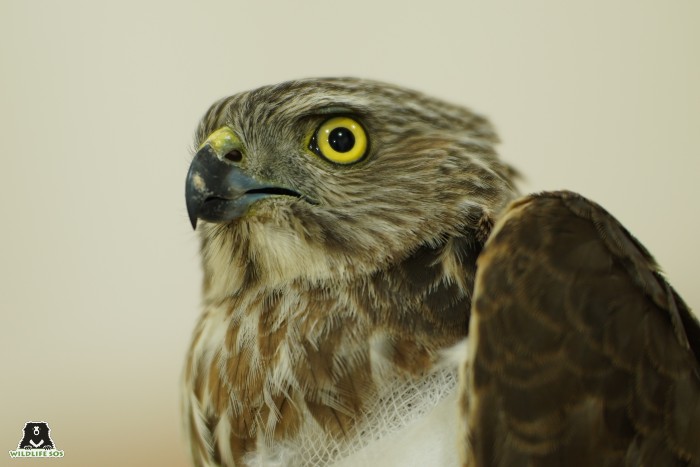
Some commonly seen raptor species include the Black kite, Red kite, Common buzzard, Peregrine falcon, White-tailed eagle, Bald eagle, Osprey, Hen harrier, Marsh harrier, Eurasian Sparrowhawk and Oriental hobby to name a few. Apart from biomes such as forests, wetlands and grasslands where they are widespread, most of these birds can be seen in urban areas too such as megacities, cities and towns.
A city or a town is an advantageous setting for ornithologists to study birds and understand urban ecology. The biggest advantage of these environments is that birds can be easily seen and spotted. Birds tend to prefer areas with adequate food, water, shelter and conducive breeding conditions. By studying the urban ecology of birds, valuable insights into the ecological health of urban areas can be gained.
Birds of Prey in India
According to the Zoological Survey of India, 106 species of raptors inhabit the country. Raptors have a unique style of hunting. Stealth and speed are their most powerful attributes, using which they sneak up on their prey. Once they are in close proximity, the birds glide masterfully through trees and branches while keeping their eyes fixed on a target.
To watch these apex predators in the wild is a great delight for any bird enthusiast. Some of the raptor species that can be spotted in our country include the Black kite, Common kestrel, Common buzzard, Brahminy kite, Shikra, Golden eagle, Eurasian Hobby, Short-toed snake eagle, Crested serpent eagle and Western marsh harrier to name a few.
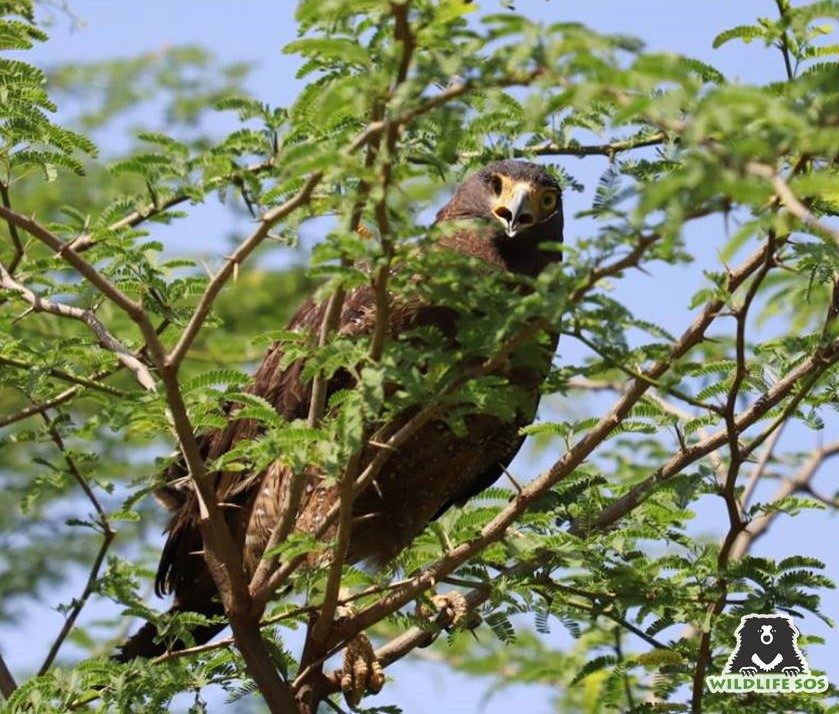
The Black kite (Milvus migrans) is the most commonly seen bird of prey that has adapted skillfully to human habitations. The Black kite is a member of the Accipitridae family that includes hawks among other birds of prey. Thought to be the world’s most abundant Accipitridae, their population is estimated to be as high as 6 million and can often be seen soaring the skies of major cities like Delhi.
Another common raptor that can be seen hovering is the Shikra (Accipiter badius). Also belonging to the Accipitridae family, a Shikra is a relatively smaller goshawk measuring between 25 and 45 cm in length, and the males weigh around 100-200 gm. The females are heavier, with their weight ranging from 130 to 260 gm. The bird has numerous subspecies, of which the A.b. dussumieri and A.b. cenchroides subspecies are found throughout India.
Swooping in to Rescue the Raptors
It is surprising to see how cities can have high species diversity of raptors. For instance, Asola Bhatti Wildlife Sanctuary in Delhi-NCR has recorded 28 species of birds of prey. But a high number of birds in such a densely populated city also means a lot of anthropogenic factors that can cause more harm than good. This is where the Wildlife SOS Rapid Response Unit has successfully intervened and rescued raptors from various scenarios.
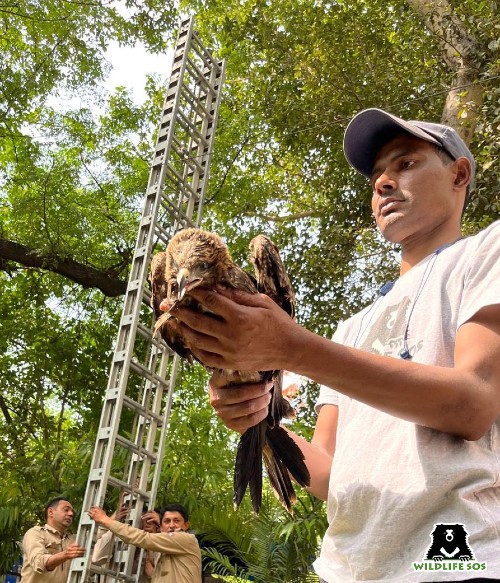
There are a lot of reasons birds can get injured in cities, such as collisions with power lines or posts, getting stuck in a kite manjha (glass-coated strings), or dehydration. Last year’s gruelling heatwaves were traumatic to wild animals, and birds were some of the worst sufferers. The extreme temperatures saw a sharp rise in bird rescue incidents that led to our team rescuing more than 20 Black kites across Delhi-NCR in April. India recorded the hottest March in 122 years last year, a situation exacerbated by human-induced global warming.
The Rapid Response Unit rescued nearly 120 birds from Delhi-NCR in March 2022, out of which 30 were Black kites. Most of these birds were found to be suffering from heat exhaustion and dehydration. One of the incidents included the rescue of a Black kite fledgling from the garden of a residence at Nyaya Marg, Chanakyapuri. The young bird was lying motionless on the ground due to excessive exhaustion. The Wildlife SOS team provided drinking water and hydrated the bird, and after observation, the bird was released back into the wild. In one of the highlights of last year, our team rescued a parched kite from the prime minister’s residence.
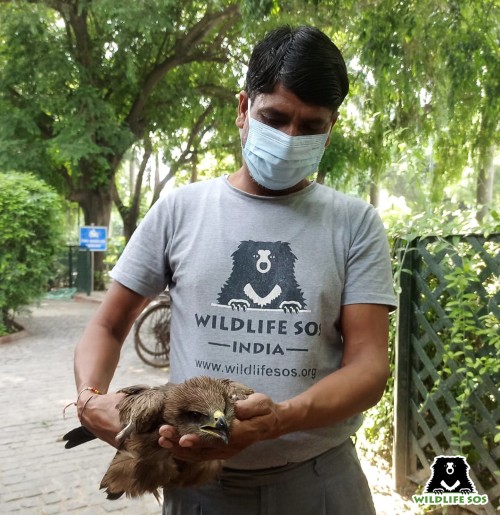
In another incident, a Black kite was found caught in a deadly manjha. It was seen hanging from a tree inside a residential complex in Sheikh Sarai Phase-I of south Delhi. The bird was dehydrated, as it was suspected that it may have remained stuck in the tree for at least two days. The kite was eventually rescued in a collaborative effort between Wildlife SOS and the Delhi Fire Service. Wildlife SOS has rescued numerous distressed birds from such situations and provided necessary medical aid to the city’s avian population.
Keeping An Eye Out
Wildlife SOS recently treated a severely injured Shikra at its Manikdoh Leopard Rescue Centre in Maharashtra. The bird had damaged the radius and ulna bones (bones that help them to fly) in its right wing, and was rescued by the forest department from a human settlement. The veterinary team stabilised the fracture using bandages and sticks, and administered pain medication, vitamin and mineral supplements to aid the healing process. The bird recuperated under medical observation and once the vets deemed that the Shikra had fully recovered, it was released back into its natural habitat.
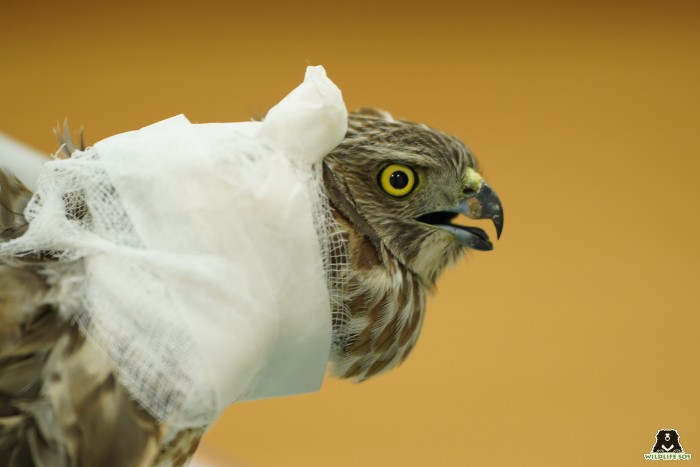
It is common to spot raptors in the vicinity of human habitations. And when it comes to the more common ones like Black kites, our Rapid Response Unit gets busy attending rescue calls during the summer months. High temperatures make birds sick, and the major cause for this is dehydration due to a heat stroke. Kites have a tendency to fly at higher altitudes for a prolonged period, and are therefore more prone to excessive heat.
To help birds during the summer season, you can do your bit by placing earthen water bowls on terraces, in balconies, on window sills, outside residential complexes and shops. Creating a green cover by planting more trees and by nurturing potted plants can also provide respite to the birds. In case a resident of Delhi-NCR comes across any such injured or exhausted bird, you can reach out to Wildlife SOS’ 24×7 emergency helplines:
Delhi NCR – +91 9871963535
Agra – +91 9917109666
Vadodara – +91 9825011117
Jammu & Kashmir – +91 7006692300, +91 9419778280

